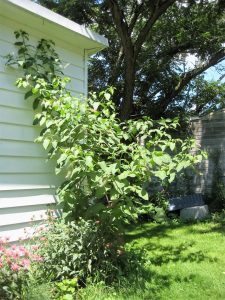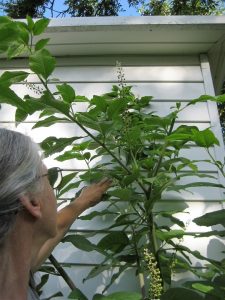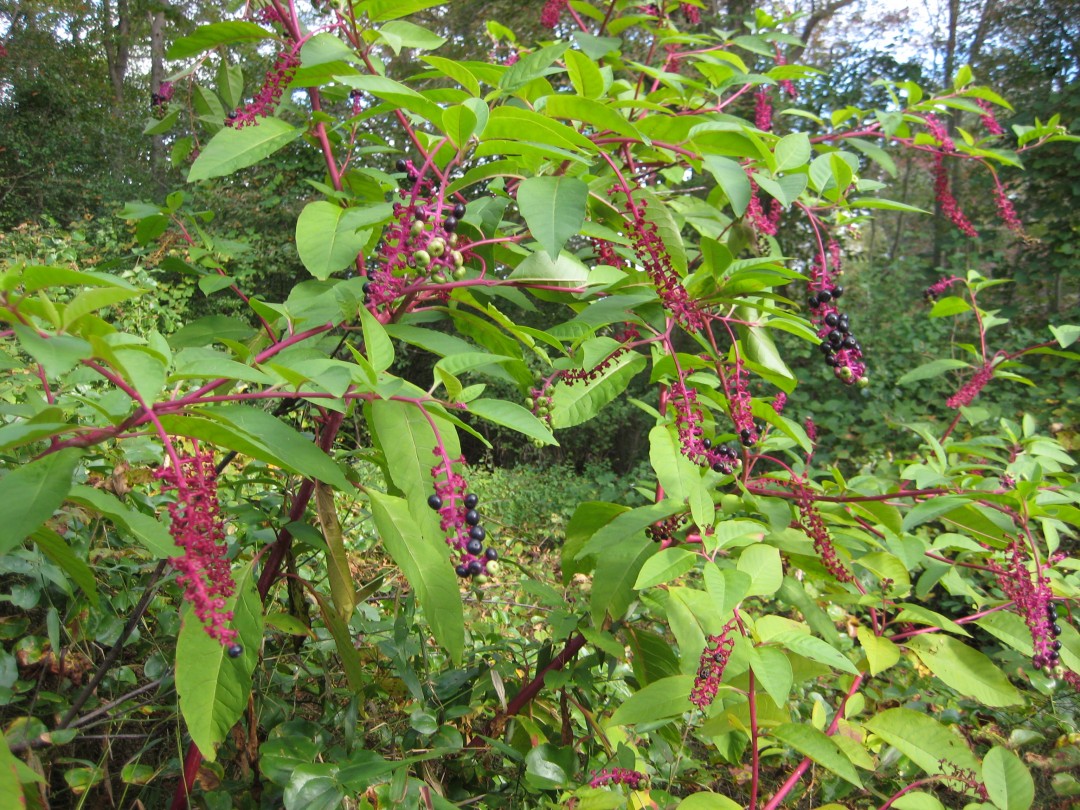I spend a lot of time working in the flower garden. Weeding, watering, composting, arguing with crabgrass, finding just the right location for the delphiniums. And every now and then I ask, why go to all that trouble? Why not forget about the flowers–pretty though they be–and just go all out for vegetables? Why work so hard for things you can’t even eat?
But it’s not so much humans that I’m gardening for these days. The kids won’t eat the green beans and kale, anyway. I’m trying to expand my point of view, be less human-centric. It’s not all about me, or even my family. Other families have to eat, too–nonhuman ones, I mean.
We hear a lot about honeybees declining, but lots of other pollinators need flowers. Swallowtail butterflies. Hummingbirds. Monarchs. Moths. And in fall, plants that have berries provide crucial food for birds, whether they’re migrators or stay-at-homes. So a plant with flowers, lots of munchable leaves for caterpillars, and abundant fall berries is worth my time.
This gangly, strange-looking character is pokeweed. I bought it at a native plant sale a few years ago, but it never sent up more than a few floppy leaves, and I’d almost given up hope. Native plants are hard to raise in a garden, I find—wild things seem to need wildness, and often pine away in spite of my fussing and tending.
But this year, something happened–either the stars aligned, or I put just the right amount of well-composted manure in the right place–but the pokeweed really took off. It’s crazy–I’m almost afraid to get too close. It hit eleven feet this week (I measured) and shows no signs of stopping.
The skinny white flower clusters aren’t much to look at now, but soon they’ll be dangling chains of shiny maroon berries strung on gorgeously purple stems. Bird candy.
A word of warning—those gorgeous purple berries are pretty toxic, so not the best plant for kids. But pokeweed is a native American plant, and the berries are a source of high-quality nutrition for birds. Cardinals, mockingbirds, catbirds, phoebes, mourning doves, cedar waxwings, etc. A big pokeweed like this could really make a difference for bird life, especially in a suburban environment where there’s not much else around.
Thanks to Zach Baldwin for this photo of a ruby-crowned kinglet feasting on pokeweed.





Can butteflies eat plant/ berries?
Good question! Apparently it’s not a great butterfly plant, although there’s a type of moth that eats the leaves as a caterpillar. My pokeweed flowers are visited by lots of small pollinators, tiny bees, beetles and other insects–mostly native species, I would guess.